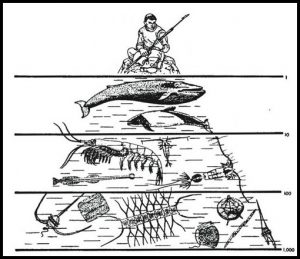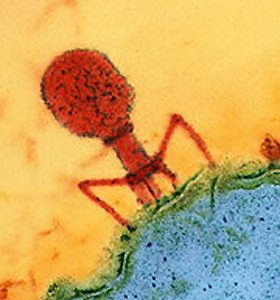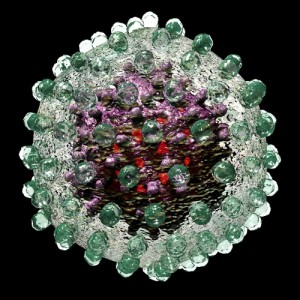As a child I was taught there was a pyramid. Microscopic organisms like bacteria and viruses were at the bottom, humans at the top. Scientists like Charles Darwin and Philosophers like Plato had long embraced the idea that humans were only a part of the natural world, that we had no special place as rulers of the planet. But textbooks and modern TV science shows often still portray us as the smartest, best-est organisms…ever.

Stephen Harrod Buhner in his beautiful book, Plant Intelligence and the Imaginal Realm rages against the ‘schooling’ that allows humans to see themselves as separate and superior. He urges us to seek the deeper meaning of human existence as a part of the natural world– ” sensuous, liquid, alive, luminous.” Buhner id. Thoreau is far from my favorite writer but he describes being as one with this natural world during a rainstorm and felt, “an unaccountable friendliness, all at once, like an atmosphere sustaining me.” Buhner believes that, if we can get our minds around our connection to every organism on the planet, we can leave our stressful, hostile, unhealthy view of the world behind. We can seek and feel friendliness. A luminous, integrated network of friends. This week’s new friends: viruses; next week, bacteria; and plants after that.

Viruses are hard to love as friends but they do very heavy work, storing and transforming DNA/RNA and making other chemistry magic. They are believed to make evolution possible. Like humans, viruses are “deeply interwoven” into Earth’s great story. Like humans they aggressively interface with the exterior world. Like us they have an outer covering to help this interface: we have skin; viruses have an outer “protein envelope” studded with information receptors. Buhner id. According to scientist Frank Ryan, viruses detect the chemical composition of cell surfaces, to find just the right cell. This is accomplished Ryan says, by using “three-dimensional surface chemistry.” This tiny organism, invisible to us without an excellent microscope, receives incoming information, determines any negative impact and decides what to do next. Decides whether to kill or feast or indulge in a joyride.
Viruses create a “species’ swarm, a self-organized whole that acts as an extensive intelligent organism”. Buhner id. They are predators and according to Ryan, not only intelligent, but extremely intelligent. “In a sense every sufferer evolves his or her own strain of virus, and within each sufferer the strain is not a single viral genome but a swarm of thousands of related genomes, all furiously mutating, metamorphosing…(the viruses) can speed up or slow down at will or overwhelm the failing immune system with novelty from week to week, day to day.” Coded for long term survival, viruses don’t often kill their host. The are a great success; one of the two dominant life forms on the earth (microbes are the other). There are a lot of them.
10,000,000,000,000,000,000,000,000,000,000,000,000,000,000,000,000,000,000,000,000,000,000,000,000,000,000,000,000,000,000 viruses are in the ocean at any given moment. That mass would be 75 million blue whales. Many viruses, of course, live on land; and, the ones we are most interested in, live and replicate inside of human cells.They are old friends and, in addition to their evolutionary work, some viruses are bad friends and cause colds, flu, polio and much more. They make us sick but are amazing adversaries; recent science has only enhanced respect for viral intelligence. “The Mimivirus is found to be able to to repair it’s own DNA, correct errors in reproduction, create mRNA and translate these into proteins. It has genes never before described in a virus.”

The beautiful Herpes virus can “match wits” with complex human cells.To get into the cell, the herpes virus uses five receptors and uses the lipid molecules on its surface to bind with the human cells. Then after fusion with the cell membrane, the tiny organism hijacks a transport system to get to the nucleus where it tricks the nuclear protection devices. link
If one accepts Buhner’s premise that the Earth, Gaia, is one living mass– sensuous, light-filled, conscious–one might wonder how she feels about her darker parts. Human life is rich with achievement, but with a faulty braking mechanism. For example, humans have managed to end the life of the mighty, 400- mile long Cauvery River in India. After massive deforestation of hillsides and Bauxite mining that collapsed groundwater levels, humans  now flee, their lives at risk from starvation. What is a living, breathing, sensuous, light-filled network to think? Viruses and humans. Is the destruction, illness and death they cause necessary? Perhaps constructive on some level we do not understand. At least viruses are smart enough to pull back and leave their host alive–most of the time.
now flee, their lives at risk from starvation. What is a living, breathing, sensuous, light-filled network to think? Viruses and humans. Is the destruction, illness and death they cause necessary? Perhaps constructive on some level we do not understand. At least viruses are smart enough to pull back and leave their host alive–most of the time.